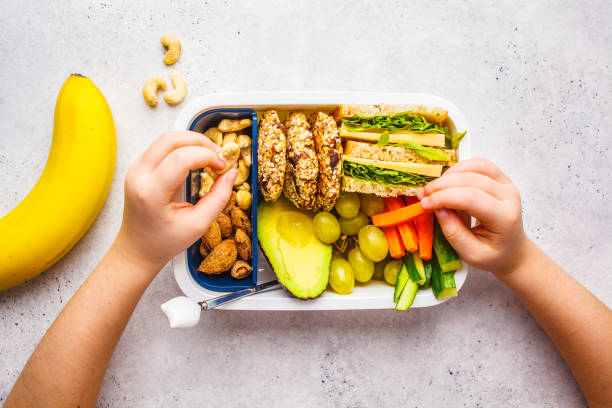Soy in the diet has been implicated as increasing belly-fat! Are there any real “benefits” from the soybean-based foods such as soy milk, soy protein and tofu?
The food processing giants and Government agencies would like us to believe that soy products are a “health food” and a suitable substitute for meat, poultry and dairy products. On closer examination though, it has been revealed that many of their offerings contain added dairy by-products and contribute to mineral deficiencies in humans.
Soy beans contain anti-nutrients such as goitrogens (substances that depress thyroid function) and some of the highest levels of a plant lectin that’s a natural insecticide – a “poison” which can cause severe allergy problems in human beings.
Because of its poisonous potential the soybean had never been considered as a “food” in Asia until the discovery of the fermentation process during China’s Zhou Dynasty, sometime around 1000BC which gave rise to the use of soy sauce and miso (un-fermented, the bean causes digestive problems and gastric distress). Centuries later it was found that if a soybean puree was mixed with plaster of Paris or Epsom salts a semi-solid, chewable curd (tofu) resulted. But it wasn’t until around the 11th Century that soybeans were farmed to any degree in China.
The soy bean does have a high protein content and to committed vegetarians that seemed to herald an appropriate substitute to meat. While fermentation deactivates some of the bean’s anti-nutrients no amount of cooking or processing removes all of the lectin from the soy bean or its by-products. Many people suffer reactions after eating meat substitutes made from the soy bean.
Despite the widely promulgated misinformation about the “benefits” of soy, at no time was it ever considered to be a health-food in Asia! The soybean was originally used in western farming as a rotation crop for cattle fodder and also proved to be a good fertilizer to restore the vitality of nutrient-depleted soil.
The modern “milk” form of soy contains phytic acid which blocks the uptake of essential minerals such as calcium, iron and zinc and promotes the leaching of calcium from the human skeleton. Zinc (the intelligence mineral) is essential for optimal development of the brain and the functioning of the nervous system. It plays a critical role in the human reproductive system and is important for protein synthesis and collagen formation. It’s also involved in the blood-sugar control mechanism which provides protection against diabetes.
Neither soy-milk nor cows milk contain the “long-chain” fatty-acids essential for human brain-development. Only mother’s milk does. However, coconut oil and red meat can provide a medium-chain fatty-acid which the human system can convert to the long-chain form easily enough.
Traditionally, the Chinese and Japanese consumed only small amounts of fermented tofu, miso or soy sauce as part of a mineral-rich, fish-broth “appetizer”, followed by a serving of meat or fish. When soy products such as tofu are consumed with meat, the mineral-blocking effects of soy’s phytates are greatly reduced. But to substitute tofu for meat, poultry or fish can lead to severe mineral deficiencies in the human system.
Soybeans are not rich in calcium and the “added” calcium in soy milk is usually calcium carbonate which the human system cannot process very well. For your health it’s better to take a highly absorbable supplement such as AlgaeCal or Calcium Orotate.
To make their artificial products, the processors mix a slurry of soy beans with an alkaline solution (usually a gasoline derivative) to dissolve the bean fiber which is then precipitated and separated using an acid wash and, finally, neutralized in a second alkaline solution during which a toxin called lysinoalanine is formed. The resultant curds are then spray-dried at high temperatures to produce a powder called soy-protein-isolate (SPI). Nitrites, which are potent carcinogens, are formed during spray-drying. A high-temperature, high-pressure extrusion process then converts the SPI into a textured vegetable protein (TVP). With the addition of artificial flavorings, fat, preservatives, sweeteners, emulsifiers and synthetic nutrients SPI is used in most soy foods that imitate meat, poultry and dairy products as well as in baby formulas and some brands of soy milk.
Despite the refiners’ best efforts to remove a lot of the anti-nutrients and poisons from soy their final offerings are still industrially produced “food-substitutes” âEUR’ far from natural or health-promoting! Yet, SPI and TVP are used extensively in school lunch programs, commercial baked goods and even some diet beverages. Being much cheaper than animal protein and having an indefinite shelf-life, textured vegetable protein is rapidly being incorporated into many fast-food offerings. They are heavily promoted in third-world countries and form the basis of many food give-away programs.
Quite a few medically advanced countries have banned the use of soy in infant formulas, not only because of the phytic acid content, which causes mineral deficiencies, but also due to the high levels of trypsin inhibitors and soy phyto-estrogens. The trypsin inhibitors interfere with the digestion of protein, resulting in stunted growth while the phytoestrogens from soy, touted by the soy producers as beneficial for menopausal women, which they are, but also have the potential to cause infertility and to promote breast cancer in younger women. And, just as serious, consumption by infants has been linked to auto-immune thyroid disease.
It’s amazing how fake science can put a positive spin on an anti-nutrient for the financial gain of a few, which causes massive problems for the many! We need to question any and all information handed out by the food producers and get back to basics in our daily diet.




